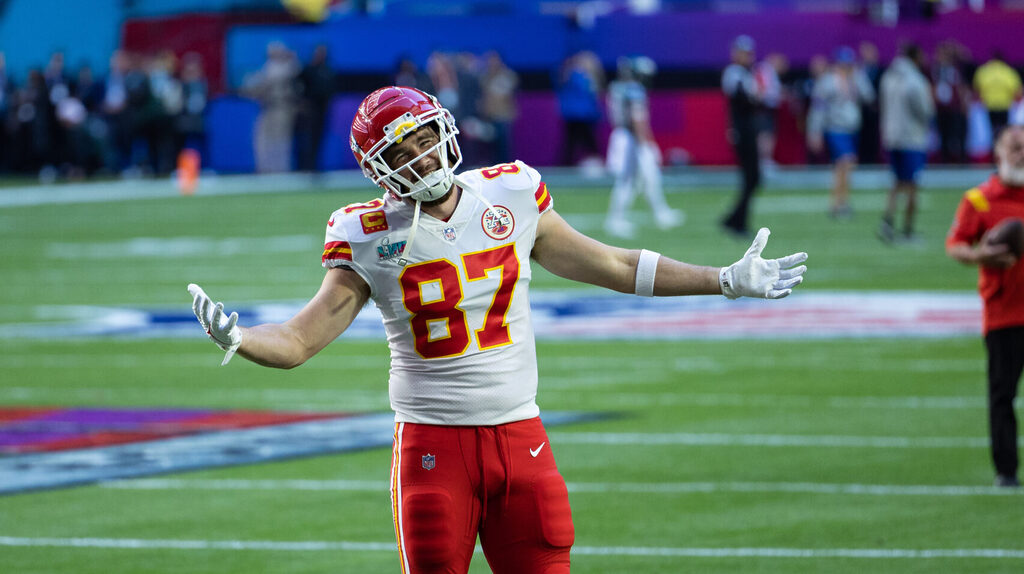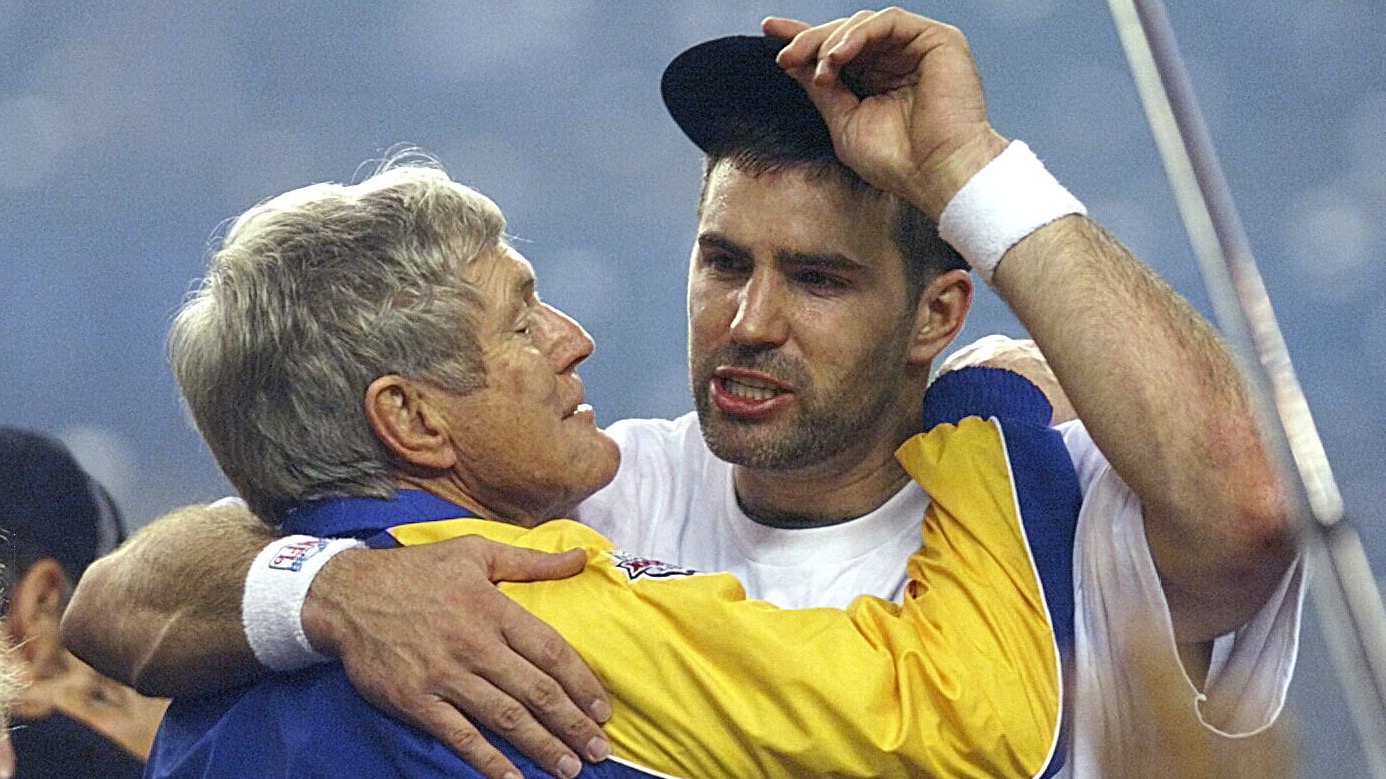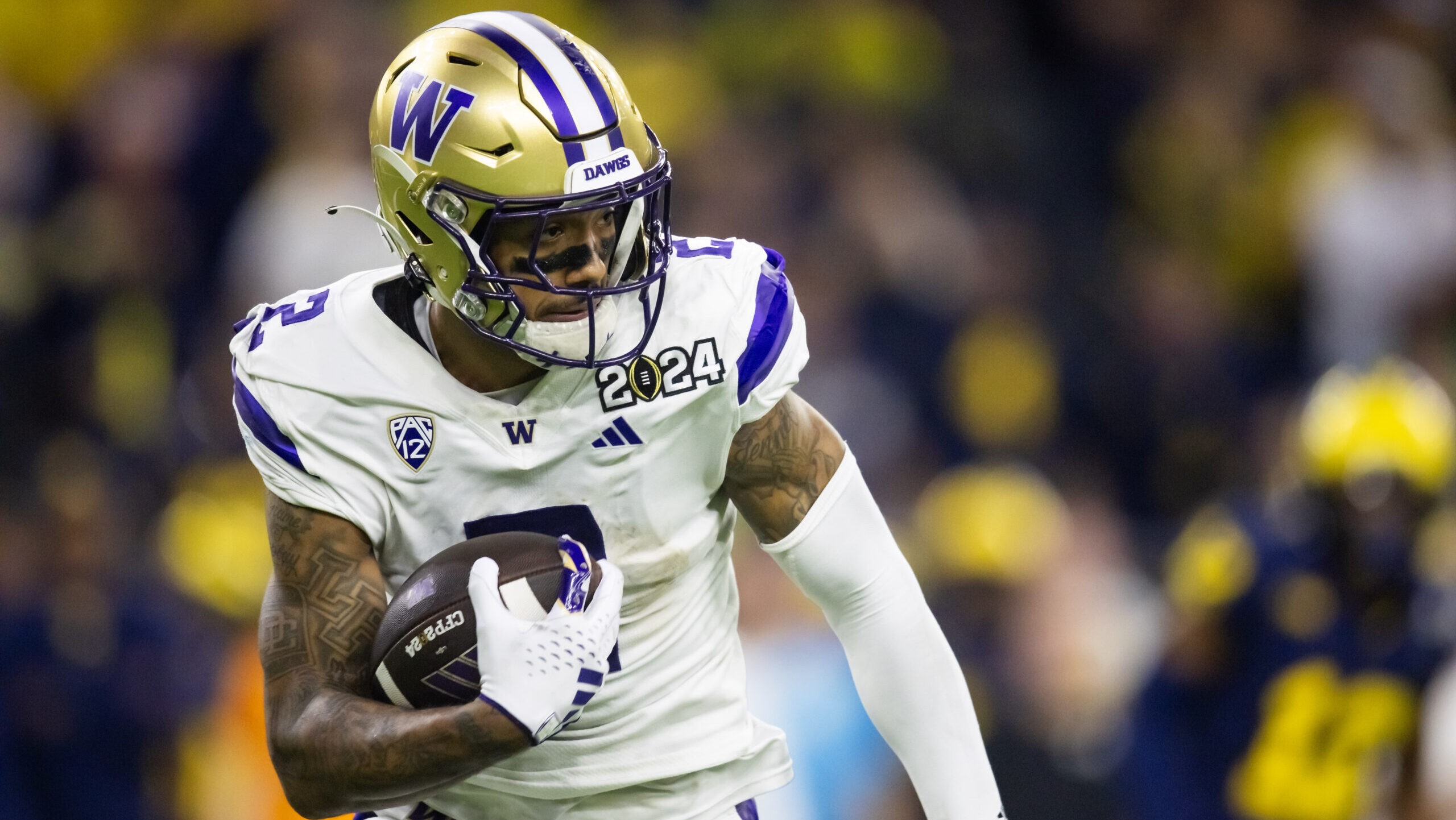Analysis
8/3/23
6 min read
Will Tight Ends be Devalued the Same Way Running Backs Are?

Running backs' struggle to raise their salaries compared to other positions has been well documented in recent years, as Saquon Barkley, Josh Jacobs and many others know so well.
Another undervalued offensive position is tight end. The position is the next battleground for a deserved salary leap among the elite players, which should subsequently trickle down through the tight end ranks.
Even the Best Are Underpaid
Travis Kelce is an eight-time Pro Bowler, four-time First-team All-Pro and two-time Super Bowl champion as Patrick Mahomes’ primary target in the Kansas City Chiefs’ offense. He's an extremely popular team leader and has seven consecutive seasons with more than 1,000 yards receiving.
Kelce amassed 110 catches for 1,338 yards and 12 touchdowns in the 2022 regular season. Plus, he added 27 receptions for 257 yards and four TDs during the Chiefs’ three postseason victories.
Kelce is underpaid for his production. He’s just the league’s third highest-paid tight end at $14.3 million per year, and he still has three years left on his contract. Should he make less than half as much as his former teammate Tyreek Hill? Hill earns $30 million per year on his extension as the NFL’s highest-paid receiver until Justin Jefferson surpasses him.
George Kittle is the second-highest-paid tight end at $15 million per year and was a Second-team All-Pro behind Kelce last season. Yet, he makes $9 million per year less than his San Francisco 49ers teammate — wide receiver Deebo Samuel.
The league’s highest-paid tight end in new money is Darren Waller, who received his $17 million per year extension before the Las Vegas Raiders traded him to the New York Giants this past offseason. Waller’s actual compensation is $12.7 million per year over five years. His contract runs through 2026, and his dead money hit is manageable if he can’t stay healthy. He missed 14 games in the past two seasons.
Among the four tight ends selected to last season's Pro Bowl, three are signed through 2026 — Kelce, Kittle and Mark Andrews ($14 million per year). Dawson Knox of the Buffalo Bills was a replacement for Kelce, who was in the Super Bowl, and Knox is under contract through 2026 for $13 million per year.

Who's Got Next?
That leaves T.J. Hockenson of the Minnesota Vikings as the remaining Pro Bowl tight end. He is in the last year of his contract ($9.4 million) and is negotiating an extension. He’s most likely the next test case for tight ends seeking to elevate their salary level.
Hockenson is Kirk Cousins’ No. 2 target behind Jefferson. He had 60 catches for 519 yards and three TDs in 10 games with the Vikings last season after the Detroit Lions traded him. The Lions drafted him eighth overall in 2018.
Hunter Henry of the New England Patriots is also a pending 2024 free agent in the last year of his deal ($12.5 million per year). He had his lowest receiving yards (509) since his rookie season in 2016, so he’ll need a much more productive season to make a big salary leap.
The Patriots also signed Mike Gesicki in free agency on a one-year, $4.5 million contract (plus up to $3 million in incentives). Gesicki played for Miami last season under the $10.9 million franchise tag and is a pending 2024 free agent who can shoot for a bigger long-term deal. But he is another example of the relatively depressed tight end market with his pay reduction this year.
Dalton Schultz is in the same boat as Gesicki. Schultz was a franchise player for Dallas at $10.9 million in 2022, but the Cowboys let him leave for Houston in free agency. There, Schultz took a pay cut to $6.5 million on a one-year deal.
The $20 Million Man?
If Kelce doesn’t have his contract renegotiated in the next year or so, the tight end with the best chance to break the $20 million per year barrier is Kyle Pitts in Atlanta.
He was the No. 4 overall pick in 2021 and made the Pro Bowl as a rookie when he had 68 catches for 1,026 yards (only one TD). A knee injury limited him to 10 games (and 28 receptions) last season. He will be eligible for an extension (but also a fifth-year option exercise) in 2024. A big year could set him up to lead a tight end salary surge.
Sign of Things to Come?
Perhaps Cole Kmet’s recent extension from the Chicago Bears is a good omen for tight end value rising. Kmet got $50 million over four years ($12.5 million per year). That is good for a player who has not made a Pro Bowl and had only 50 catches for 544 yards in 2022. However, he did have seven TD receptions.
Tight end is a unique position — part wide receiver, part offensive lineman — and an integral part of most teams’ short and intermediate passing game with an occasional deep ball. Some tight ends become, in effect, their team’s No. 2 receiver.
In most cases, tight ends have to block effectively for the running game to be successful, and they are occasionally asked to chip top pass rushers or even take them on 1-on-1.
Looking Back in Time
The agent firm I work with — IFA — was part of an effort to change the tight end salary structure in 2012 with Green Bay Packers tight end Jermichael Finley. The Packers were planning to place the tight end franchise tag on Finley for $5 million, but Finley took over 50 percent of his offensive snaps as a wide receiver.
Our firm threatened to file a grievance claiming if the Packers franchised Finley, it should be as a wide receiver at $9 million on the one-year tender.
Finley received a two-year, $14 million deal plus incentives in a compromise. Two years later, the same situation unfolded for tight end Jimmy Graham when the New Orleans Saints franchised him for $7 million as a tight end instead of $12.3 million for a wide receiver.
Graham lost his case in arbitration, which was another blow to tight ends. Still, he wound up signing a $10 million per year deal with the Saints, but he had to negotiate off the lower potential franchise tender.
Unfortunately for the tight ends, and similar to running backs, their salary percentage increases pale compared to wide receivers and quarterbacks, along with top offensive linemen, edge rushers and cornerbacks.
It’s the way of the NFL world as of now. And it’s not a pleasant thought for players who are asked to contribute in so many ways to successful offenses but are undervalued at contract time. We’ll see if that changes down the road.
Jeff Diamond is a former Vikings GM, former Tennessee Titans President and was selected NFL Executive of the Year after the Vikings’ 15-1 season in 1998. He now works for the NFL agent group IFA based in Minneapolis. Follow him on Twitter at @jeffdiamondnfl.









